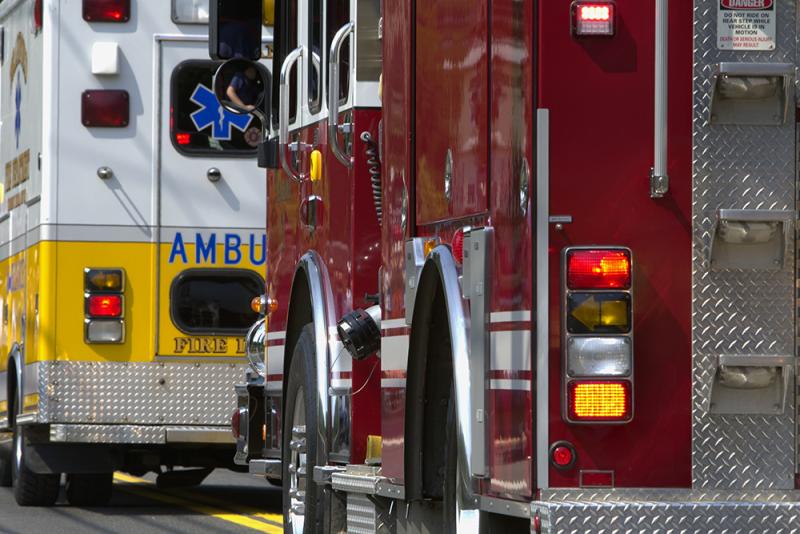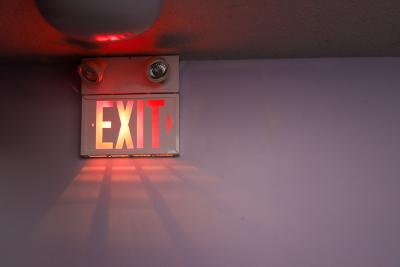As a police officer in 1999, shortly after the Columbine High School shooting, I was one of many police officers given the job of studying the horrific incident. Our job was to take what we learned from Columbine and create training programs for our area schools that might help save lives should a similar event occur.
I started my company Nightlife Security Consultants a short time before Columbine, and it wasn't very long after, around 2002, I started considering that many of our clients—restaurants, bars, clubs, and other hospitality venues—could really use similar training to what I was teaching to school children and administrators. In 2009, after a Portland, Oregon, after-hours club shooting, I developed our first hospitality-specific active shooter awareness training (ASA) curriculum. Our ASA training programs have grown as these incidents have increased in frequency nationwide.
After initial research to develop our ASA training program, and as we continued researching the topic, we discovered a few crucial points I would like to share. If seriously considered, these points can give owners, managers, and team members a much better understanding of active shooter events, how to prepare for them, what to do during them, and how to possibly respond after an event.
Planned vs Unplanned Events
First, there are two types of active shooter incidents: planned and unplanned. As the words might suggest, a planned incident would be where the suspect plans their attack ahead of time and then carries that plan out. The Pulse Nightclub and the Borderline Nightclub shootings are both examples of planned events. The likelihood of a planned shooting event occurring at your venue is small.
As operators, we should be more worried about the second type of shooting, the unplanned incident, which occurs when the suspect is already in the venue and a conflict unfolds during their visit. Drinking is typically involved, and an argument or confrontation pushes them to pull out their weapon. These unplanned active shooting incidents don't often make national news, and I would bet money on it that your city has had a bar or club shooting like what I've described sometime within the past 1-2 years.
The most common type of hospitality shooting event is the unplanned event. Our ongoing monitoring of shooting events here in the U.S. shows that unplanned shooting events occur almost nightly in our country. We rarely hear about these shooting events on major national news outlets because the story is not sensational enough to be "newsworthy”—a sad but true fact.

How to Discuss an Active Shooter Situation with Your Team
Owners and managers must talk to their teams about the possibility of an active shooting incident at their workplace. At first, the discussion can be uncomfortable and feel daunting. We've found that adding it to the list of normal work topics discussed or reviewed monthly can genuinely prepare the team to respond and potentially save lives. Operators must remember that, unfortunately, most younger team members have grown up with school lockdown drills and news headlines. They are ready for this discussion, and I promise you, they will appreciate it.
What active shooter preparedness topics should be discussed with your team? It is a straightforward line of talking points that you probably already know:

1. RUN. Know all exits by memory. Do not assume. Show employees and let them use these exits to establish motor memory. This exercise will allow employees to help guests escape through exits they may not have been aware of. As team members RUN, teach them to aid any arriving law enforcement by placing their "arms up and hands open," demonstrating that they are bystanders.
We also like to train team members that with the RUN aspect, a "mandatory" reunification site be established. After any evacuation event, accounting for employees must be done. Find a familiar location, one to two blocks away, that all escaping team members can run to and then be accounted for.
2. HIDE. Show and practice hiding in offices, cooler spaces, or storage areas. The idea of hiding is to be out of sight so as not to allow any shooter a visible target.
Discuss with the team what you could use to barricade the office door, how to turn off the cooler from the inside, or what would be the plan of attack if the storage space was breached. With this discussion, teach silent activity, the need to turn off cell phone ringers, and how to attempt to secure the hiding location. Discuss what is next should the hiding location be discovered. This discussion leads to the following and the most important point.
3. FIGHT. This point is a major talking point of the last hour of our ASA sessions. I don't teach martial arts or hands-on defense; however, I do teach some basic, common-sense ideas that can save lives. Some attendees have told me that this section made them immediately feel more secure and sure of themselves should they have to deal with an active shooter event.
Discuss with your team that any FIGHT response is a last resort response. If they can't RUN, HIDE. If they can't HIDE, then FIGHT. For this point, the word FIGHT does not match what I expect of anyone forced into this situation. FIGHT, in this case, means grabbing the gun or grabbing the shooter. It means finding "improvised weapons" to engage and disable the shooter. FBI studies show that the sooner a shooter is engaged and must defend themselves, they stop shooting and injuries and casualties are reduced.

What is an "improvised weapon?" Have employees look around and identify things that could be used to throw or strike the gunman with. Obvious examples include bar stools, bottles, pool sticks, napkin holders, or anything that would force the shooter to defend themselves and stop shooting. Discuss the human instinct of others "jumping in" if just one person initiates engaging the shooter.
Teach the idea of "control the gun, you control the shooter." An individual’s hands on the shooter’s weapon forces the shooter to lose control of the weapon. This has been proven true in multiple active shooter incidents. One person engages, grabs the shooter’s weapon, and moments later, others join in to subdue and neutralize the gunman.
Share this FBI training video with your team and start the conversation there. You can also put up this ASA poster to remind employees of the three responses to an active shooting event.
How the Response is Different in an Unplanned Event
Finally, I'd like to give you some very important information to share with your team about the unplanned shooter. Remember, this person entered with their weapon and had no plan to cause harm to anyone. They're with friends, they have some drinks, become intoxicated enough that they lose control, and get into an argument. The argument leads to pushing, shoving, and a fight. They feel they're losing, pulling out their gun, and shoot one to three rounds. They might have shot someone, or they might have missed, but what do they do now?
They run away. This is not someone sticking around to kill as many as they can. They are done shooting and now realize it is time to get away. It is so important for employees to understand the difference between planned and unplanned shooters. The shooting is over, and now it's time to start rendering aid to injured guests and let the gunman run away. Yes, let them run away. There is no need to fight, go for the gun, or detain the shooter if they are running away. No heroes are needed here.
Final Takeaways
The main takeaway from this article should be to begin the discussion with your team. Introduce the topic of a possible active shooter event in your venue and discuss your possible responses. Answer the question "What if?" Having this foundation of thought and conversation about your team's actions and reactions can save lives.
Do yourself and your team a favor—don’t pretend that this will never happen in your venue. Start the conversation today.
Robert C. Smith is the President and CEO of Nightclub Security Consultants, Inc. In 1998, while still a San Diego Police Officer, he formed his company after an incident surrounding the use of force by a security guard at a San Diego bar. This incident compelled Robert to create the first training program in the country designed specifically for the in-house guard or bouncer.
Should you like more information about NSC’s training programs, contact us at [email protected].
Are you registered for our Crave and Crave on the Menu newsletters? Sign up today!
Plan to Attend or Participate in the 2024 Bar & Restaurant Expo, March 18-20, 2024
To learn about the latest trends, issues and hot topics, and to experience and taste the best products within the bar, restaurant and hospitality industry, plan to attend Bar & Restaurant Expo 2024 in Las Vegas. Visit BarandRestaurantExpo.com.
To book your sponsorship or exhibit space at the 2024 Bar & Restaurant Expo, contact:
Veronica Gonnello (for companies A to G) e: [email protected] p: 212-895-8244
Tim Schultz (for companies H to Q) e: [email protected] p: 917-258-8589
Fadi Alsayegh (for companies R to Z) e: [email protected] p: 917-258-5174
Also, be sure to follow Bar & Restaurant on Facebook and Instagram for all the latest industry news and trends.
